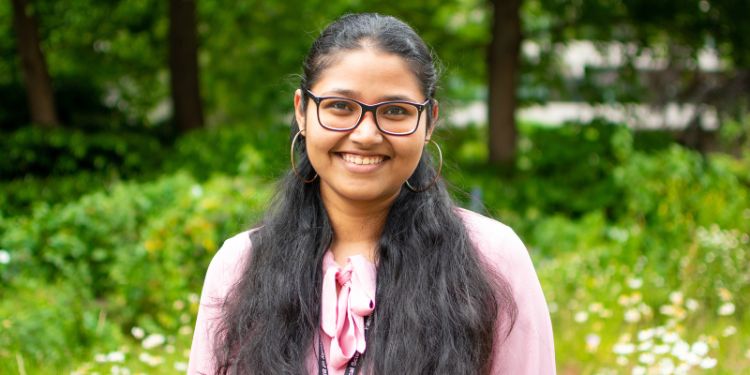Our People: Eshita Sengupta

Our staff and students are helping to overcome global challenges. Meet some of the people who are making a difference.
My academic journey began in India, where my fascination with the brain as an undergraduate sparked an interest in neuroscience research.
As a newcomer to the field, I wanted to find a study program that would deepen my understanding of the brain, give me the opportunity to make a difference and help propel me into the world of academia.
That’s how I found myself at the University of Groningen in the Netherlands studying behavioural and cognitive neuroscience.
While navigating the challenges of being an international student presented its hurdles at times, my passion for the field and the support of my network has fuelled my determination to thrive.
It was also a fantastic opportunity to satisfy my inner curiosity and delve into some ongoing questions on the biochemistry of neurons. Why don’t our nerve cell age? What’s their secret? And how do we encourage our nerve cells to regenerate?
Taking my research to the next level
From here, I joined University of Leeds on the White Rose Doctoral Training Programme in Mechanistic Biology. What attracted me to the program was the chance to work with a fantastic supervisor, along with opportunities to network with a cohort based in Leeds, Sheffield and York.
The professional placement for 3 months, away from the academic research, was also a big benefit as it’ll shine a light on some of the career opportunities after graduation.
I’m really enjoying my time here. It’s a fantastic city, and so close to beautiful countryside. It is a bit chilly though!
My research: our sensing brains
Sensing - to feel or experience something– is all thanks to our brain.
From a tap on the shoulder to the sound of our favourite radio station, our brains help us to experience the world around us through a complex chain of signals reacting inside our bodies.
My research project delves into the captivating world of “mechanosensation”, the ability to sense mechanical stimuli such as touch, pressure, and vibration.
This sense plays a crucial role in our movement, balance, and perception of the world around us. However, much remains unknown about the intricate mechanisms underlying this vital sense.
My project aims to unlock these secrets by identifying new genes and proteins involved in mechanosensation, and understanding their functions.
As part of my studies, I'm developing a sophisticated cell profiling system that can label nerve cells based on their response to touch. This technique could help us to identify and segregate responsive cells from the rest of them.
Imagine using light to activate specific cells responding to a gentle breeze, then comparing their genetic profile with those unresponsive to the same touch. This comparison unveils gene patterns specific to touch sensitivity, leading us to potential "touch genes."
By filling this knowledge gap, my research hopes to not only illuminate how we sense touch but also pave the way for advancements in sensory neuroscience. This could one day have implications for understanding and treating conditions like chronic pain and sensory disorders.
This is just the beginning of my exploration into the captivating world of touch. I’m motivated to continue my research and contribute to a more inclusive and diverse scientific community, where women are empowered to make groundbreaking discoveries and shape the future of science.




